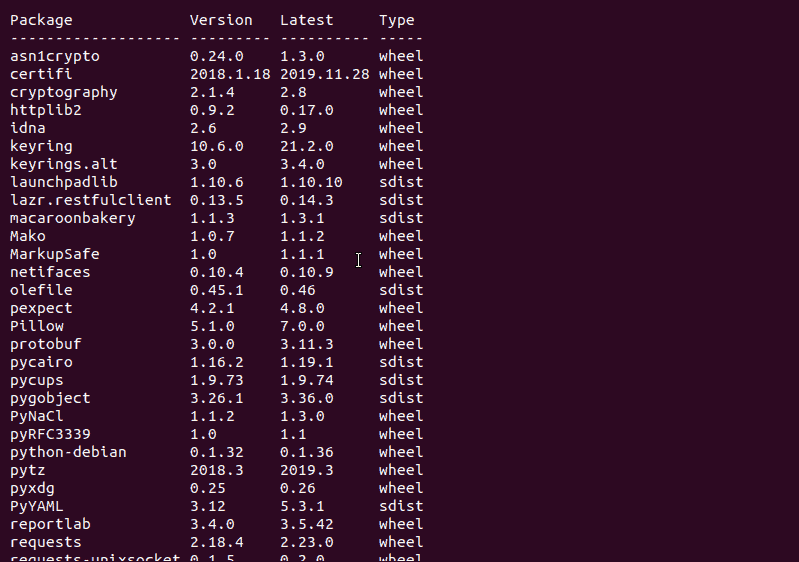

- #Pip3 upgrade all packages how to
- #Pip3 upgrade all packages install
- #Pip3 upgrade all packages update
- #Pip3 upgrade all packages windows 10
- #Pip3 upgrade all packages software
#Pip3 upgrade all packages install
Let’s suppose you want more than one package then instead of installing each package manually, you can install all the modules in a single go. We can search for a particular existing package using the Python pip search command. If you want to remove the dependencies as well then you can see the dependencies using the pip show command and remove each package manually. Note: The pip uninstall command does not uninstall the package dependencies. The Python pip uninstall command uninstalls a particular existing package. The Python pip list command displays a list of packages installed in the system. Get a list of locally installed Python modules

To upgrade the Python version of the user environment, one can. Required by shows the packages that require NumPy Packages / libraries installed in this environment are available to all users on the.or: Unable to find resource t64.exe in package or permission denied.
#Pip3 upgrade all packages windows 10
#Pip3 upgrade all packages update
Purpose This cli tools helps you interactively (or not) upgrade packages from requirements file, and also update the pinned version from requirements file (s).

It also updates the version in your requirements.txt file. Let’s suppose we want to install the Numpy using pip. Because upgrading requirements, package by package, is a pain in the ass. We can install additional packages by using the Python pip install command. If you do not have pip installed on your system refer to the below articles. This command will tell the version of the pip if pip is already installed in the system. To check whether pip is installed or not type the below command in the terminal. Python pip comes pre-installed on 3.4 or older versions of Python.
#Pip3 upgrade all packages how to
The basic syntax of pip commands in command prompt is: pip 'arguments' How to install pip? We can use pip to install packages that do not come with Python. Python pip is the package manager for Python packages. Taking multiple inputs from user in Python.Python | Program to convert String to a List.isupper(), islower(), lower(), upper() in Python and their applications.Print lists in Python (5 Different Ways).Different ways to create Pandas Dataframe Before you install any packages, the first step is to create a virtual environment. If you are using Python3+, Then you will have to update pip3 to avoid.Reading and Writing to text files in Python.Python program to convert a list to string.How to get column names in Pandas dataframe.Adding new column to existing DataFrame in Pandas.ISRO CS Syllabus for Scientist/Engineer Exam.ISRO CS Original Papers and Official Keys.GATE CS Original Papers and Official Keys In order to update pip or pip3 package installer you can run the below command. Now all you have to do is type pip-upgrade whenever you want to update your packages This alias works with all major shells including bash, zsh, and (my favorite) fish.Henceforth in the guide, examples are shown with pip3 user should use pip whenever package for Python 2 are required. To upgrade pip to latest version, run the below commands: #For Python 2Ĭommand pip is used for installing Python 2 packages, while pip3 is used for installing Python 3 packages. The Ubuntu repository is likely to not have the latest available version of pip. Note: For older Ubuntu versions (version 14.04 and below), you need to use apt-get should be used instead of apt.
#Pip3 upgrade all packages software
Pip is available in standard Ubuntu software repository.įor installing Pip for Python 2 packages, you can run the following : sudo apt install python-pipįor installing pip for Python 3 packages, you can run the following : sudo apt install python3-pip It installs software, and their dependencies from the standard Python repository, Python Package Index, by default.Īlthough the usual package manager apt can be used, it has several downsides when it comes to regularly updated versions of Python code, non availability of number of Python packages, and so on. Pip is the standard package management tool for software written in Python.


 0 kommentar(er)
0 kommentar(er)
